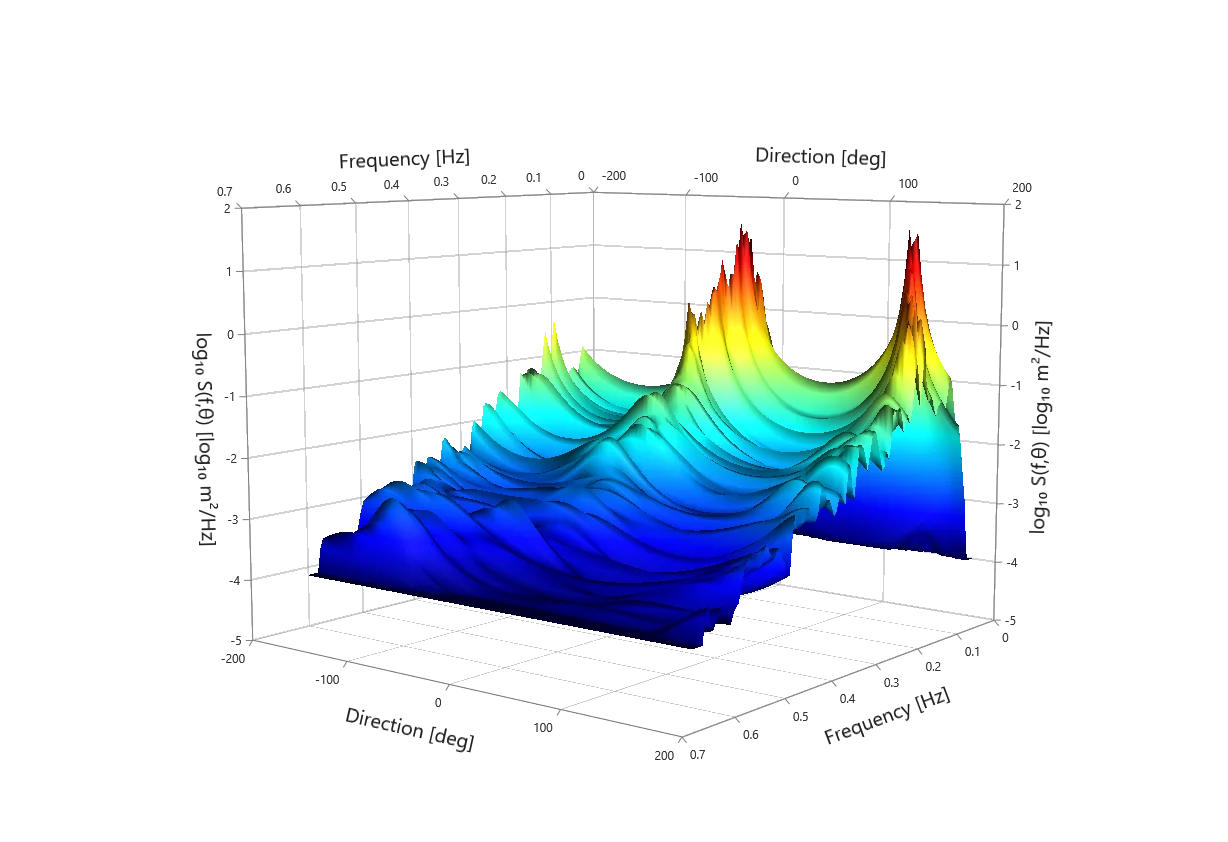Waves 5
Waves5 is Datawell’s newest Microsoft Windows based software package for data acquisition, processing, and display of wave data by Datawell Waveriders – directional and non-directional.
| Manufacturer: Datawell |
Measuring oceanographic parameters does not solely involve gathering data and logging it. To get a complete view of the governing conditions at sea, it is desirable to post-process and present the data as well. The oceanographic parameters measured with a Waverider are made available to the user by data transfer like the HF-transmitter, GSM- and satellite links and data processing, storing and presentation software. The latter is taken care of by Waves5, the Microsoft Windows based software package developed by Datawell.
Compatibility
Waves5 is compatible with any Datawell instruments listed below:
- Directional Waverider-MkIII (DWR-MkIII)
- Non-directional Waverider-SG (WR-SG)
- Wave Unit
- Directional Waverider 4 (DWR4/ACM)
Operational interface
Waves5 is a graphical software application which allows the user to connect their Datawell products to a computer. The software is, among others, used for processing oceanographic data and displaying it on the screen for operational purposes. Several wave parameters can be displayed. The way they appear on the screen is configured by the user using thresholds
Data acquisition
Waves5 supports acquiring data through the various communication options:
- Radio link (HF)
- Iridium SBD
- Iridium / GSM Internet
The data acquired through these means is saved to the hard disk and can be analysed using Waves5 as well.
Analysing data
After a measurement campaign has ended, acquired data from the data logger of an instrument can be processed and saved using various file types. Waves5 supports the file types the W@ves21 user is familiar with, originating from III-series instruments. This makes it possible to seamlessly switch from W@ves21 to Waves5. In addition to that, all data can be exported to the WA:FT (wave format), which is an XML type of file structure, easily imported in the programming language of the user’s choice for further, more detailed, analysis.


